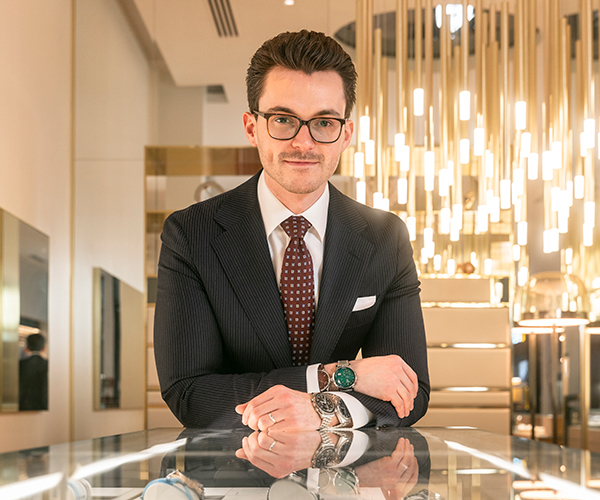The Dream
by Chrissy Kadleck | Apr. 28, 2004 | 4:00 AM
|
Green Building Whether you're building your home from the ground up or contemplating a remodeling project, you can incorporate green or environmentally friendly building techniques into your design. The first step is to reduce energy costs, says Jim LaRue, residential consultant with the Cleveland Green Building Coalition. LaRue, who works with homeowners, contractors and builders across Northeast Ohio, says a diminishing fuel supply, increasing costs and the burden on the environment are key reasons to look for any way, big or small, to slash energy costs. Installing insulation — such as cellulose blown insulation made from recycled newspapers — in exterior walls and in the attic is a cost-effective way to keep a home warm and lower heating bills. "We spend all our time figuring out where cold air is coming in and trying to stop it," LaRue notes. "If we spent more time finding out where warm air was escaping, for a few dollars we can stop many of the places where warm air is escaping out of the house." New windows actually offer the least return on investment when it comes to green building and saving energy. "The window companies won't tell you that, but that's a fact of life," says LaRue, who has been interested in green building since long before the term was coined in 1991. Replacing outdated appliances such as refrigerators, dishwashers, washers and dryers with new models that have high Energy Star ratings is another effective way to lower energy costs. Even beyond the environmental impact of the heavy draw on fuel reserves, more efficient homes mean less money leaving the area, says Mike Challender, director of the Center for Sustainable Development with the Lorain County Chamber of Commerce. "Studies have shown that 85 percent or more of every dollar you spend on energy leaves the community," he explains. "If you didn't spend that money on energy, that money could be recirculated in the community for buying goods and services at local stores." Another tenet of green building is to use building materials that have the least impact on the environment, Challender says. Simply put, the larger the piece of wood you use, the larger the casualty in the forest. Maintaining indoor air quality is another important aspect to green building, LaRue adds. "Using low volatile organic chemical [VOC] or nontoxic materials to coat things, to caulk things or as adhesives is important," LaRue says. Carpets, paints and glues all can contain varying amounts of VOCs that are emitted as gases during use or even while stored. Effective ventilation systems are essential to achieving good indoor air quality. That includes everything from venting moisture out of bathrooms to a venting system that regularly brings fresh air in. If your budget isn't big enough for recycled carpeting or bamboo flooring, even simple home furnishings can be environmentally friendly, observes Laura Mineff, owner of interior-design company Bella Terra. Salvaging old parts for a fun, fresh look can be as easy as making a coffee table with recycled cement urns and a glass tabletop. |
Hundreds of volunteers, including close to 100 seniors at the Lorain County Joint Vocational School, have lived and breathed the project for the last nine months, helping to construct the 1 1/2-story Cape Cod on Whitehead Road in Carlisle Township — the highlight of the North Coast Building Industry Association Parade of Homes "The Dream" Tour 2004, being held May 15, 16, 22 and 23. The event will kick off May 8 and 9, when the house will be open for viewing. The Lorain County Metro Parks' Carlisle Visitors Center, only 1/4 mile from the house, will host family activities, home-construction seminars and product displays.
Lorain County's commissioners, Cham-ber of Commerce and Metro Parks joined in as collaborators on the project. This innovative partnership aims to grow the green-building industry while educating students, county residents, home builders and politicians.
"What started out to be one idea has really blossomed, and we've created more partnerships in the county than, I think, any place in the state," says Jean Sexton, executive officer with the BIA. "A lot of people come to look at the house, and it's a very impressive house, but the partnerships that were formed are equally impressive."
The project broke ground last summer. The partners were scheduled to complete the home by May 1.
"Everyone is contributing in some way and exhibiting the talents of their organization -- to showcase a home which is integrating future ideas and concepts and techniques and materials," says Terry Bennett, president of the North Coast BIA. "It's almost like products of tomorrow that are being used today."
The 2,150-square-foot green home, situated on a wooded 3/4-acre lot, includes environmentally friendly systems and products, including recycled-content drywall, engineered lumber products for beams, blown-cellulose insulation made from recycled newspapers, geothermal heating, bamboo flooring and recycled carpeting and tile.
A Lorain County builder conceived the The Dream project, named after the American dream of homeownership, and served as its general contractor, overseeing the JVS students. He also sold the lot to the North Coast BIA.
When architect Joe Ferut introduced the green-building element to the students, it attracted the interest of the county commissioners, who Sexton says have long wanted a project like this in the county. The commissioners gave the North Coast BIA an interest-free loan of $100,000 for the project, to be repaid upon the sale of the house. (The sale price will likely be more than $200,000.)
Bill Randall, superintendent of Lorain County Joint Vocational School, says the students have benefited from having a real house to build and putting their education in the five trades — carpentry, masonry, plumbing, heating and electricity — to the test.
"The kids have really worked hard on it," Randall says. "On groundbreaking day, you couldn't get them to stop driving nails. And they have no financial gain; it's all experience." He adds that the students' participation in the project will be a tremendous boost to their résumés when they hit the work force.
There should be no lack of jobs for these young students, either. Sexton notes that projections indicate that another 3,200 homes will be built in Lorain County during the next 10 years.
A shortage of qualified construction workers in the industry and lack of affordable lots are two major issues confronting the National Association of Home Builders, says Bennett, who is also president of Terry Bennett Builders and Remodelers in Westlake.
"We're doing our part now to educate workers who want to enter into the construction field," he says of the JVS students. "We are educating them on proper techniques involved in residential construction and providing them an opportunity to take their knowledge from the classroom out into the field and — under nice, close supervision of an expert in their field — build a home."
Ferut, principal of Joseph Ferut and Associates Architects, worked with 18 of the JVS students during their junior year to design the home they would help build as seniors. Ferut, who formerly taught architecture at Kent State University, met with the students for three months to sketch the three-bedroom home. He says he acted more as an instructor than as an architect.
"It was Site Design 101," he explains. "We took into account the budget, the other size requirements and, because this was a green project, we talked a lot about the solar orientation of the site in terms of view and sunlight and prevailing winds and breezes and solar heat gain. And they worked with those ideas to understand where windows should be, where certain rooms should be."
With the home being so close to the Metro Parks, many area residents who tour the home will see a way to get closer to nature.
"People call every day wanting to find out how they can live close to the parks," says Dan Martin, director of the Lorain County Metro Parks. "Today, people want to live next to biking and hiking trails."
Martin says he is pleased with the environmentally friendly aspects of the home. That theme will carry over into the landscape design, created by the Metro Parks, which is set to feature low-maintenance plants and trees native to Ohio.
Nature was a main theme for The Dream interior designer Laura Mineff.
"It's a home of ideas, with the feeling or a sense of bringing the outdoors in, with all natural products and colors," says Mineff, the owner of Bella Terra. "We are putting in the home reused, recycled, remade and almost-things-that-you-think-you'd-throw-away products as our furnishings and our accessories — and still giving it that finished look."
The home exudes New England charm and coziness, glowing with mustard, honey and yellow colors from Sherwin-Williams' Harmony line of paints, which are free of volatile organic chemicals, or VOCs.
Mineff says she worked to furnish the home with her partners from Tracy and Co., Teacups in Time and Lila Jane Rullo. She even worked with a feng shui expert and consultant so that positive energy will flow from room to room.
Bamboo flooring layers the kitchen, dining area, foyer and back hall. Coated with an aluminum-oxide polyurethane finish, the bamboo floors are very hard and have a darker, almost carbonized look, says Tim White, president of Floors and More Inc. in Westlake, which provided the product.
"It's a very nice look. It doesn't look anything like your traditional hardwood," White observes. "A bamboo plant can grow up to a foot a day, so it's a renewable resource."
White also supplied the beige recycled carpet. The midpriced carpeting is made from recycled 2-liter bottles and other plastics.
The home also has been outfitted with an innovative fireplace that offers greater heat output and energy efficiency. It's manufactured by Hearth and Home Technologies Inc., Heatilator Division. The Fresh Air Fireplace recovers 50 percent of the heat that is normally wasted through a typical fireplace flue, says Joe Chentnik, a partner with O'Connor Allied Fireplace Ltd., which installed the system.
"The heat is exhausted through a heat-recovery ventilator and combined with fresh air that is drawn from the outside and then is vented into the furnace flue," he explains.
The five partners of The Dream are planning to undertake an even bigger project in the next two years, possibly in an urban location, says Mike Challender, director of the Center for Sustainable Development with the Lorain County Chamber of Commerce. They realize that this project is more than a collection of innovations. Green building presents a real economic opportunity in Lorain County, which has a great deal of available land.
Challender says that if the chamber can help businesses and residents become more energy efficient and use natural resources better, money will be freed up to circulate throughout the county, thus improving the economy.
"There are new industries that are growing out there that make or use recycled materials," Challender notes. "And if we are on the leading edge of [green building], those types of companies tend to gravitate where the action is."
A final benefit of the project may be an eventual shift in building practices. The partners' goal is to reach a point, Ferut says, "where you are not talking about doing the right thing — you just automatically do it, because it would be the only way to do a building: as energy efficient and environmentally responsive."
Trending
-
1
-
2
-
3
-
4
-
5










